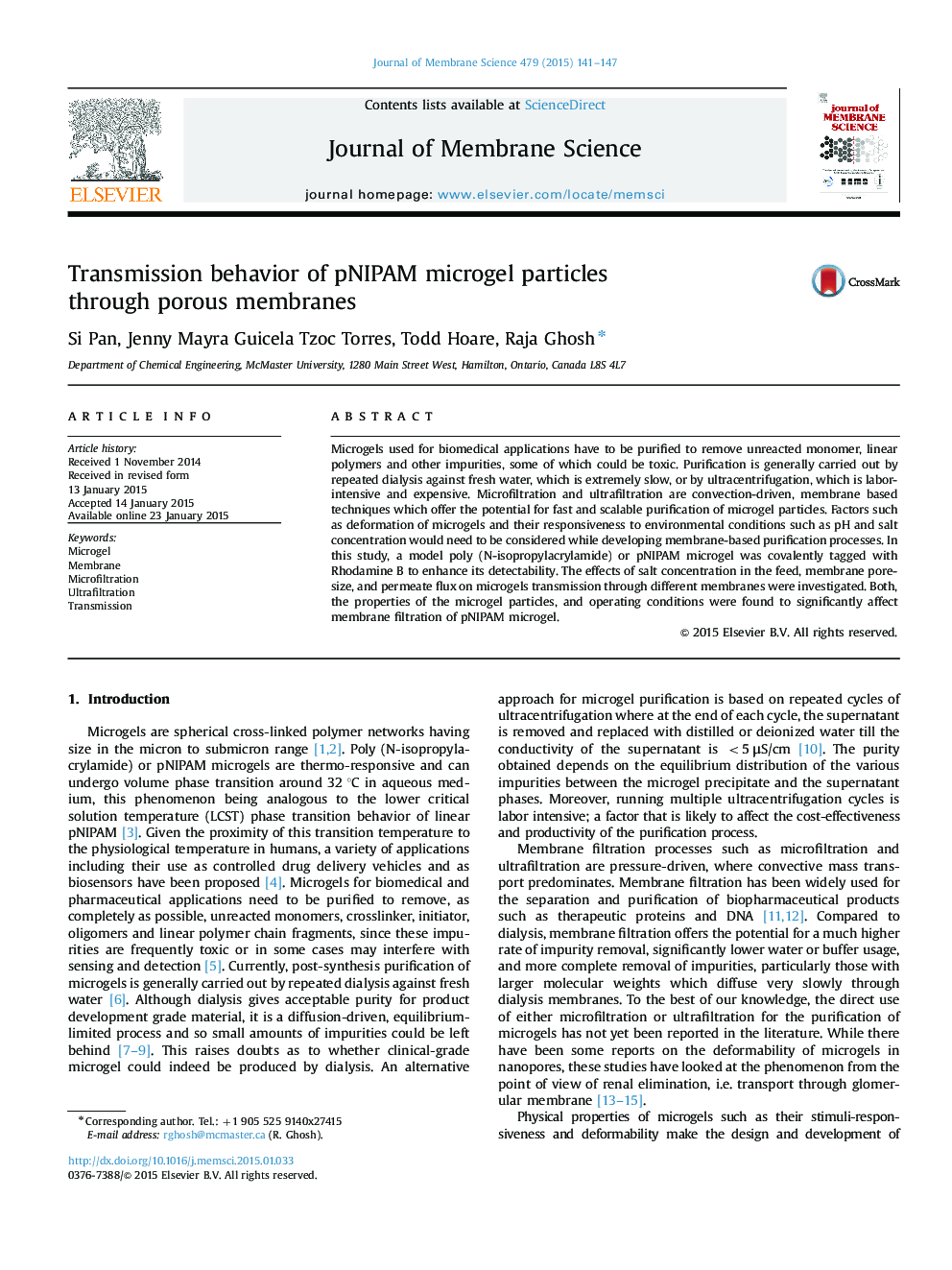| Article ID | Journal | Published Year | Pages | File Type |
|---|---|---|---|---|
| 633120 | Journal of Membrane Science | 2015 | 7 Pages |
Abstract
Microgels used for biomedical applications have to be purified to remove unreacted monomer, linear polymers and other impurities, some of which could be toxic. Purification is generally carried out by repeated dialysis against fresh water, which is extremely slow, or by ultracentrifugation, which is labor-intensive and expensive. Microfiltration and ultrafiltration are convection-driven, membrane based techniques which offer the potential for fast and scalable purification of microgel particles. Factors such as deformation of microgels and their responsiveness to environmental conditions such as pH and salt concentration would need to be considered while developing membrane-based purification processes. In this study, a model poly (N-isopropylacrylamide) or pNIPAM microgel was covalently tagged with Rhodamine B to enhance its detectability. The effects of salt concentration in the feed, membrane pore-size, and permeate flux on microgels transmission through different membranes were investigated. Both, the properties of the microgel particles, and operating conditions were found to significantly affect membrane filtration of pNIPAM microgel.
Related Topics
Physical Sciences and Engineering
Chemical Engineering
Filtration and Separation
Authors
Si Pan, Jenny Mayra Guicela Tzoc Torres, Todd Hoare, Raja Ghosh,
